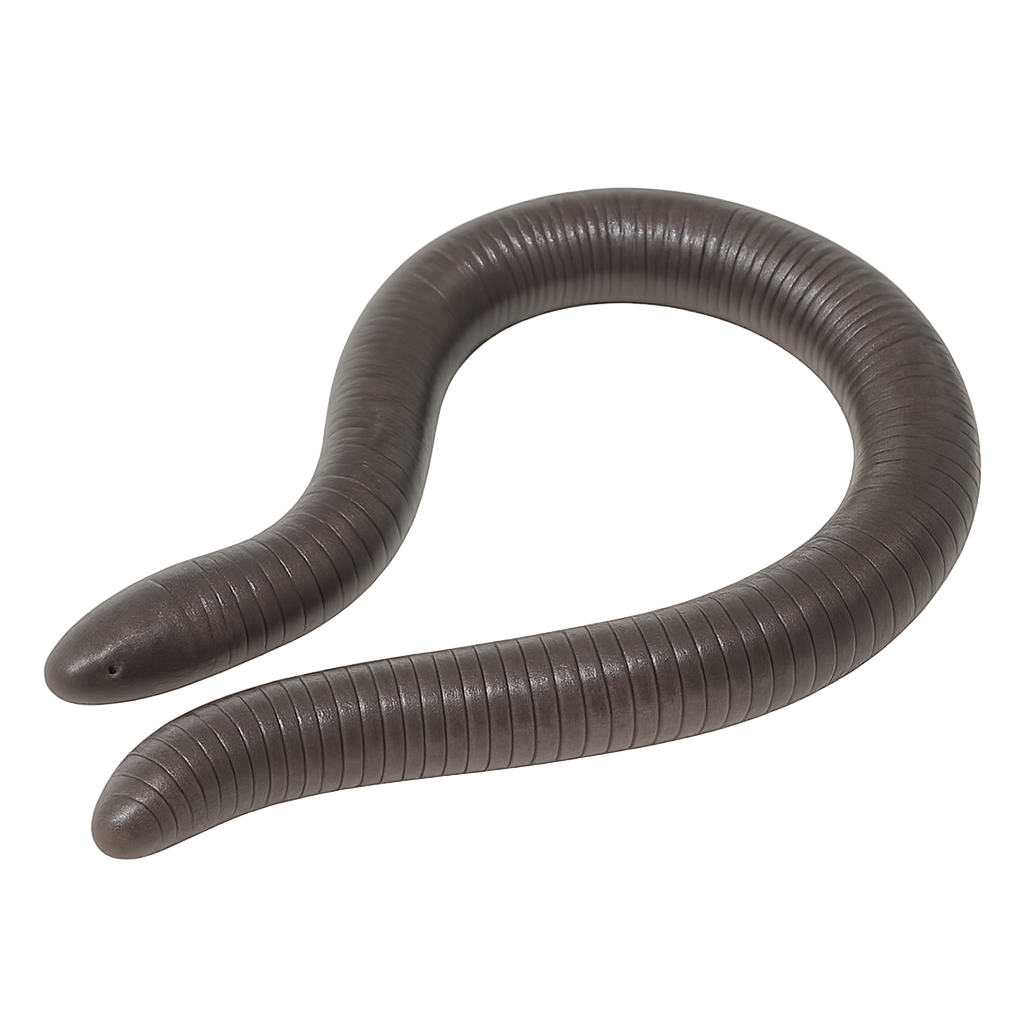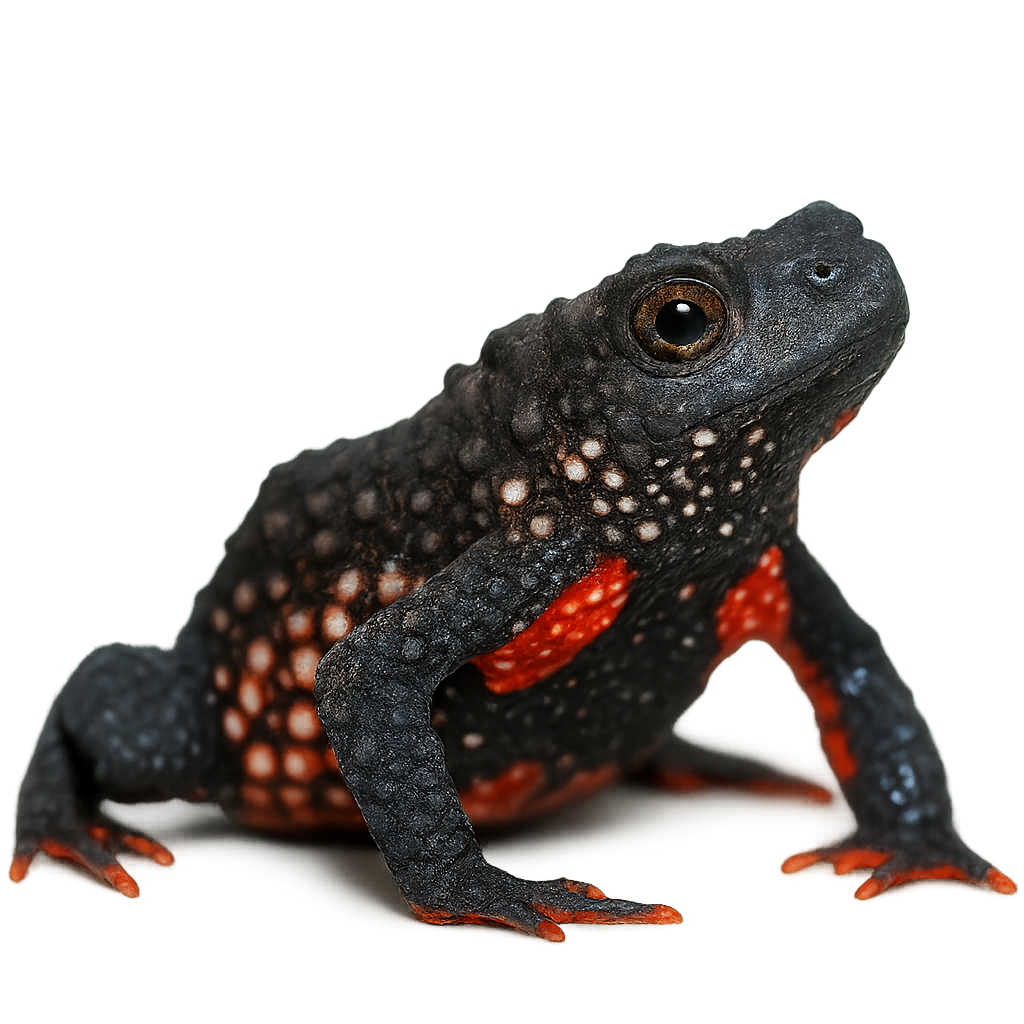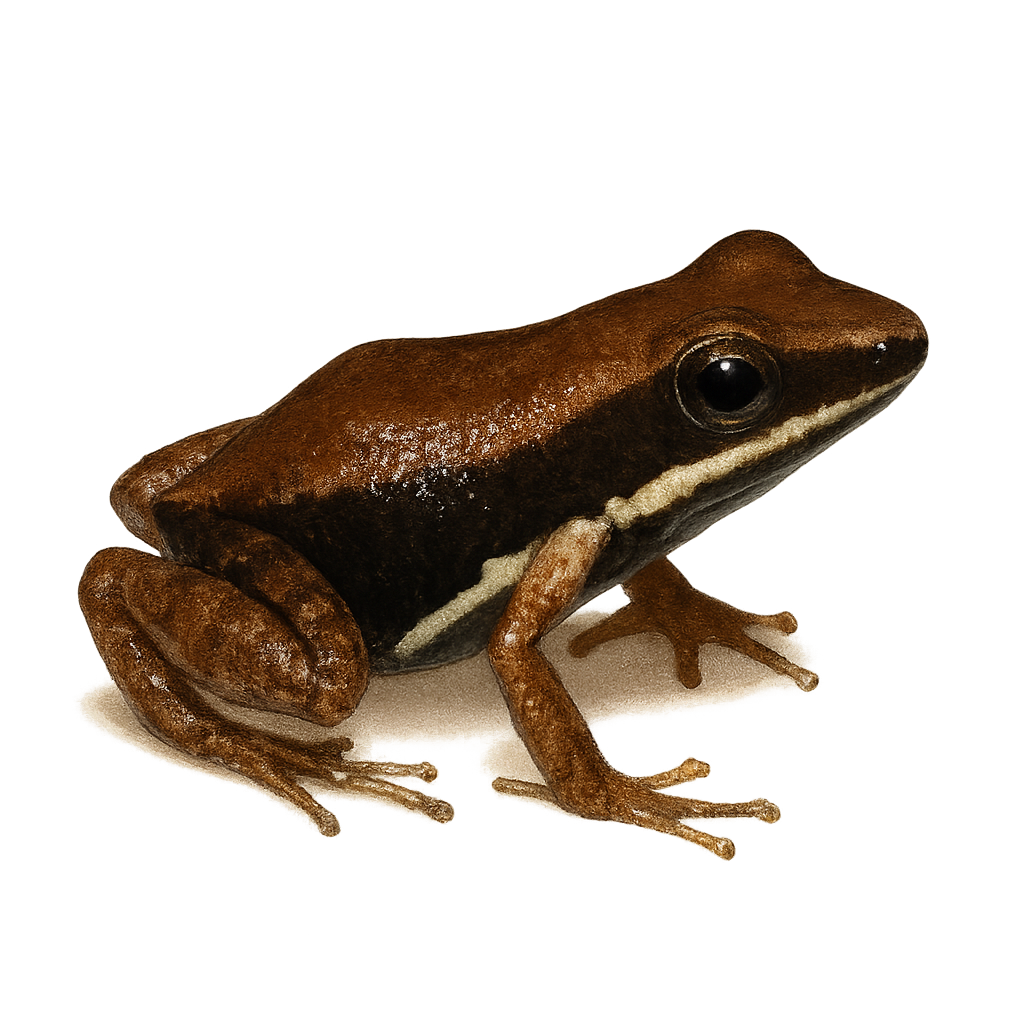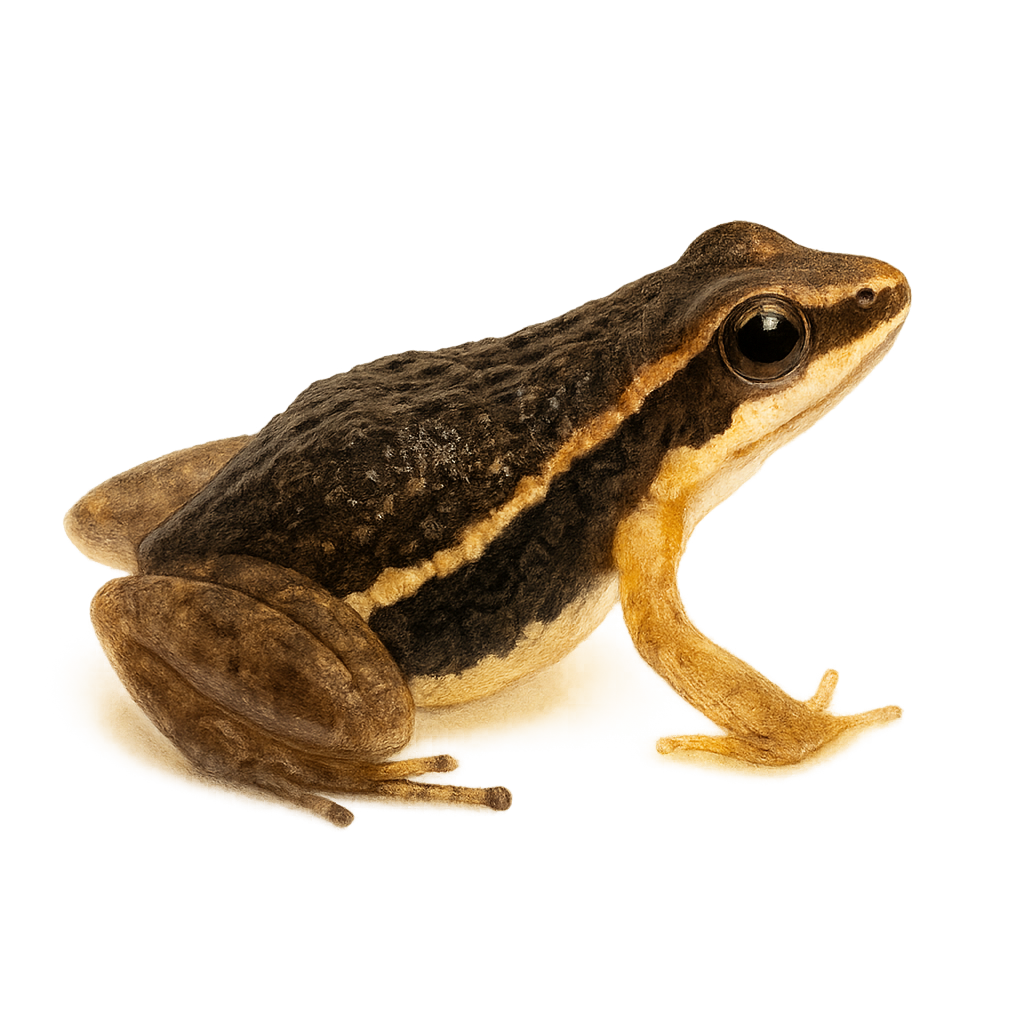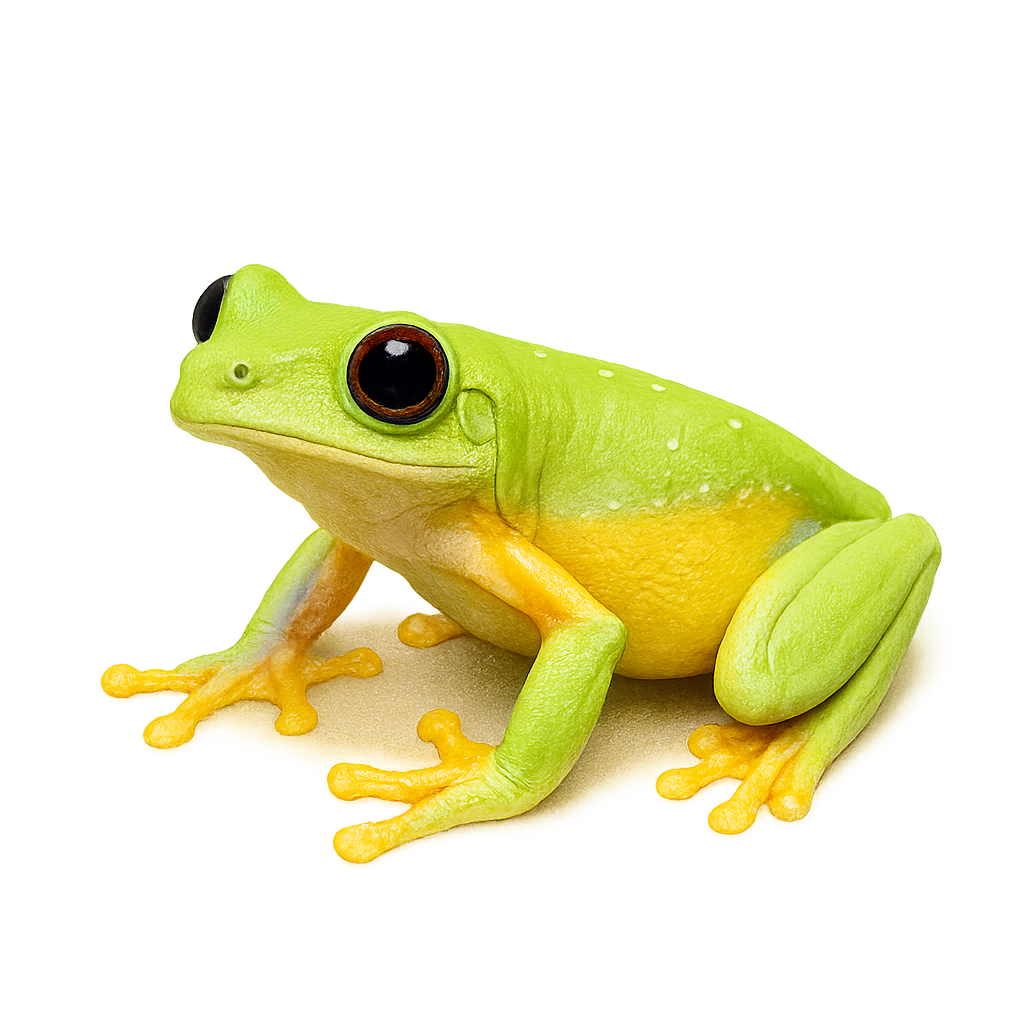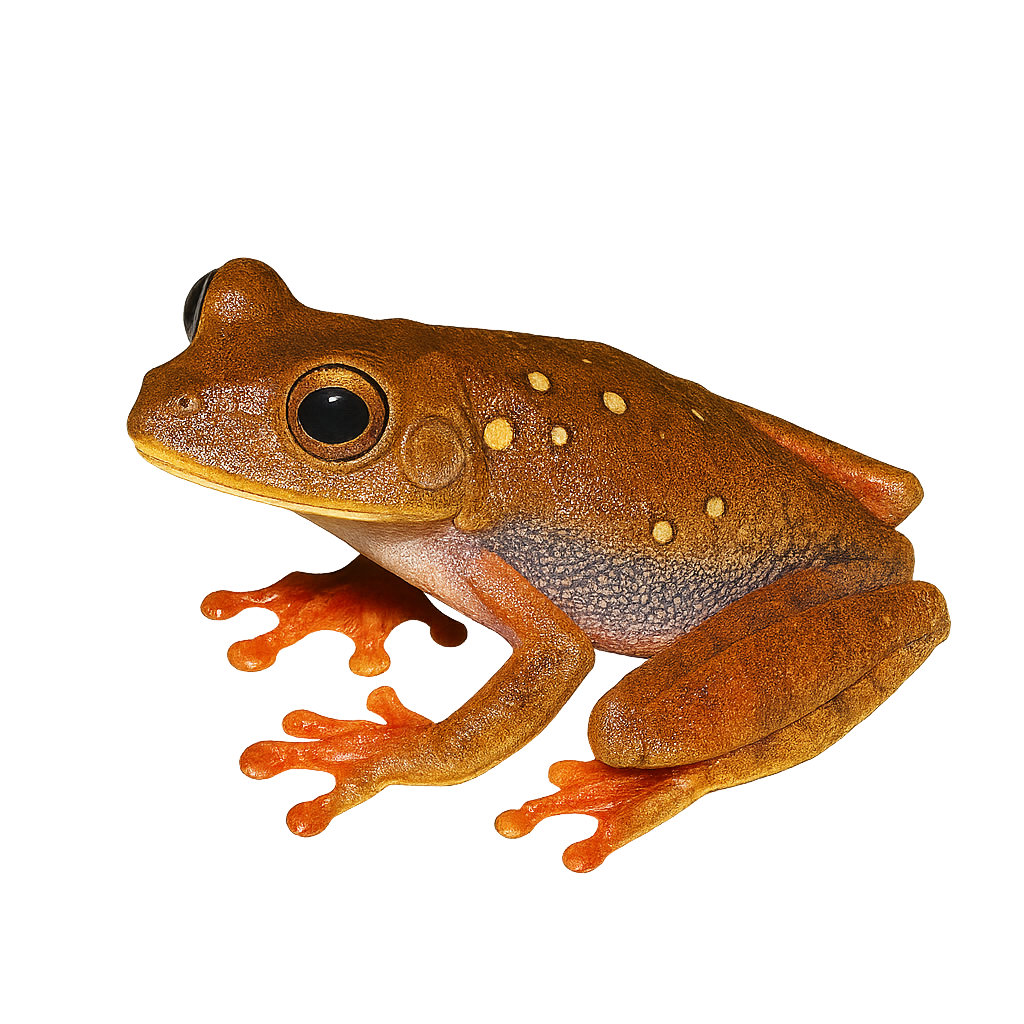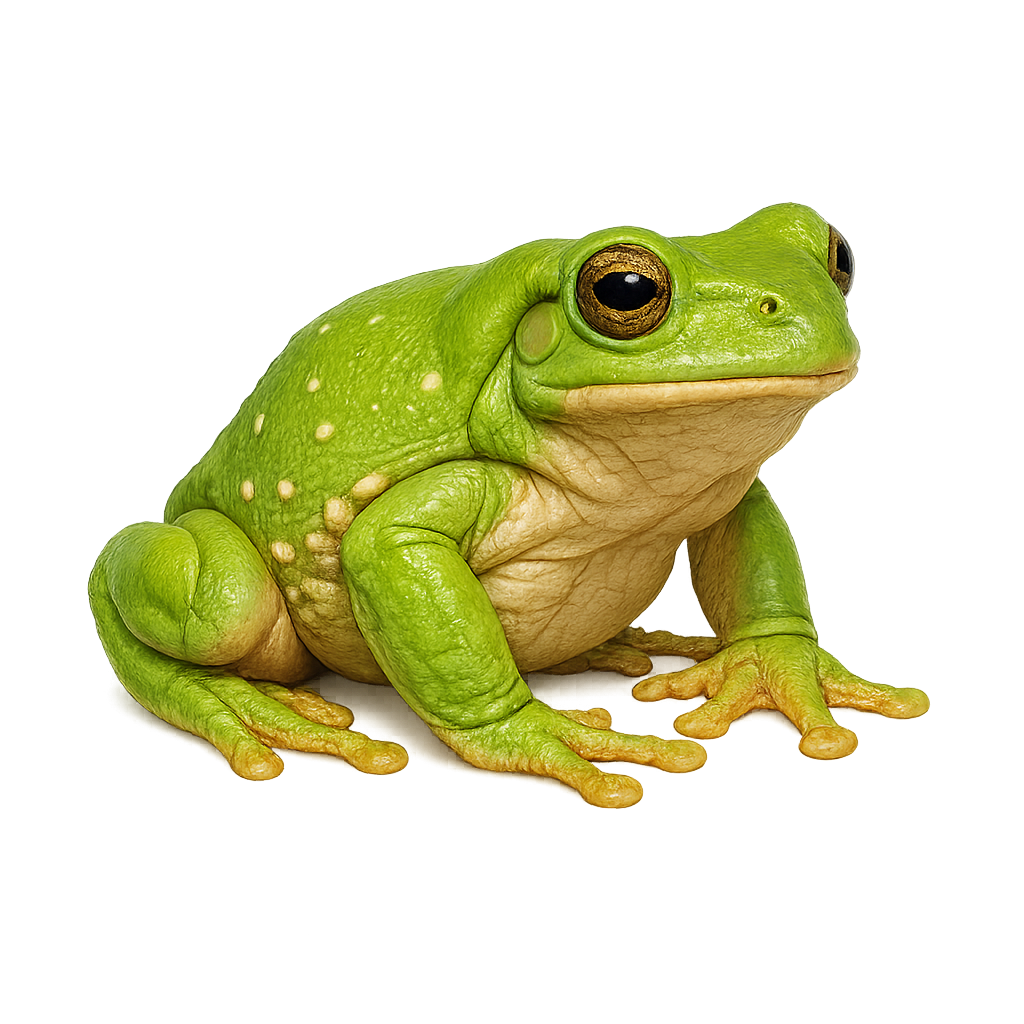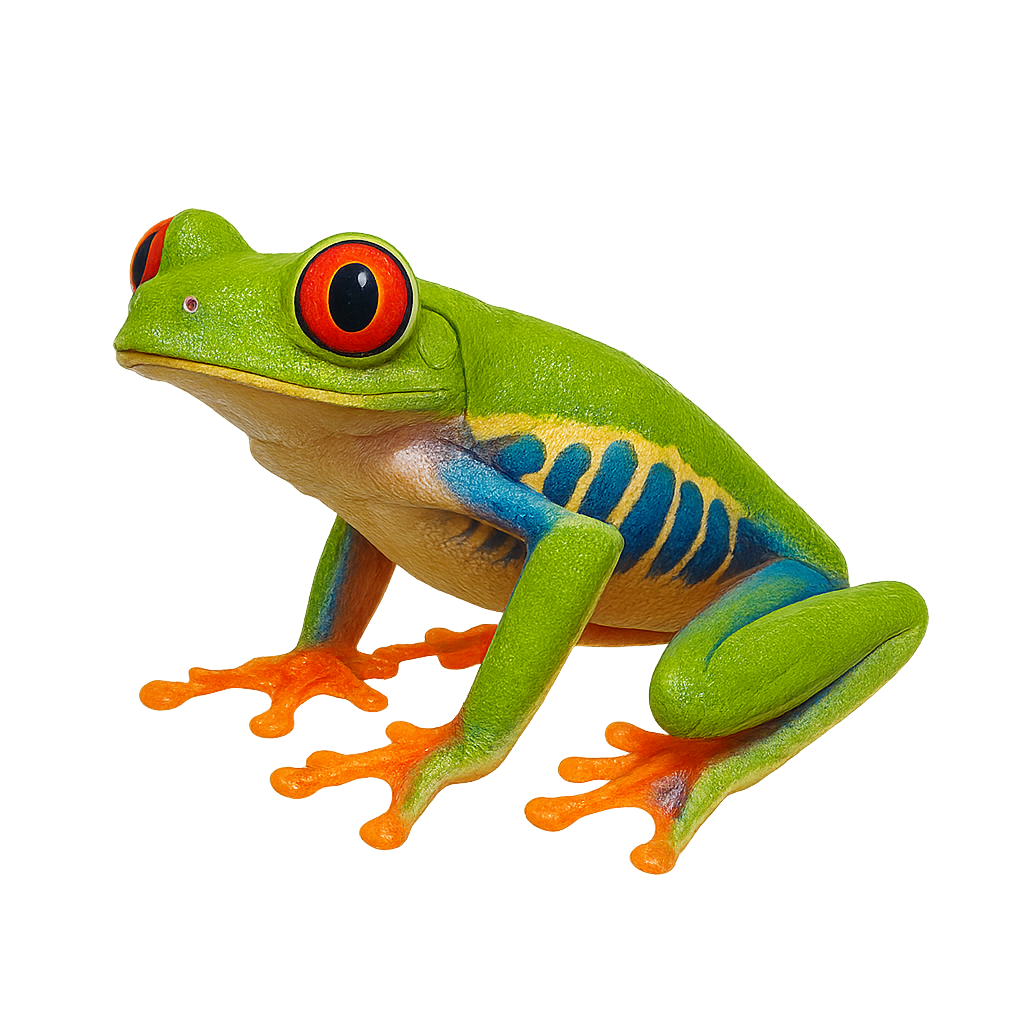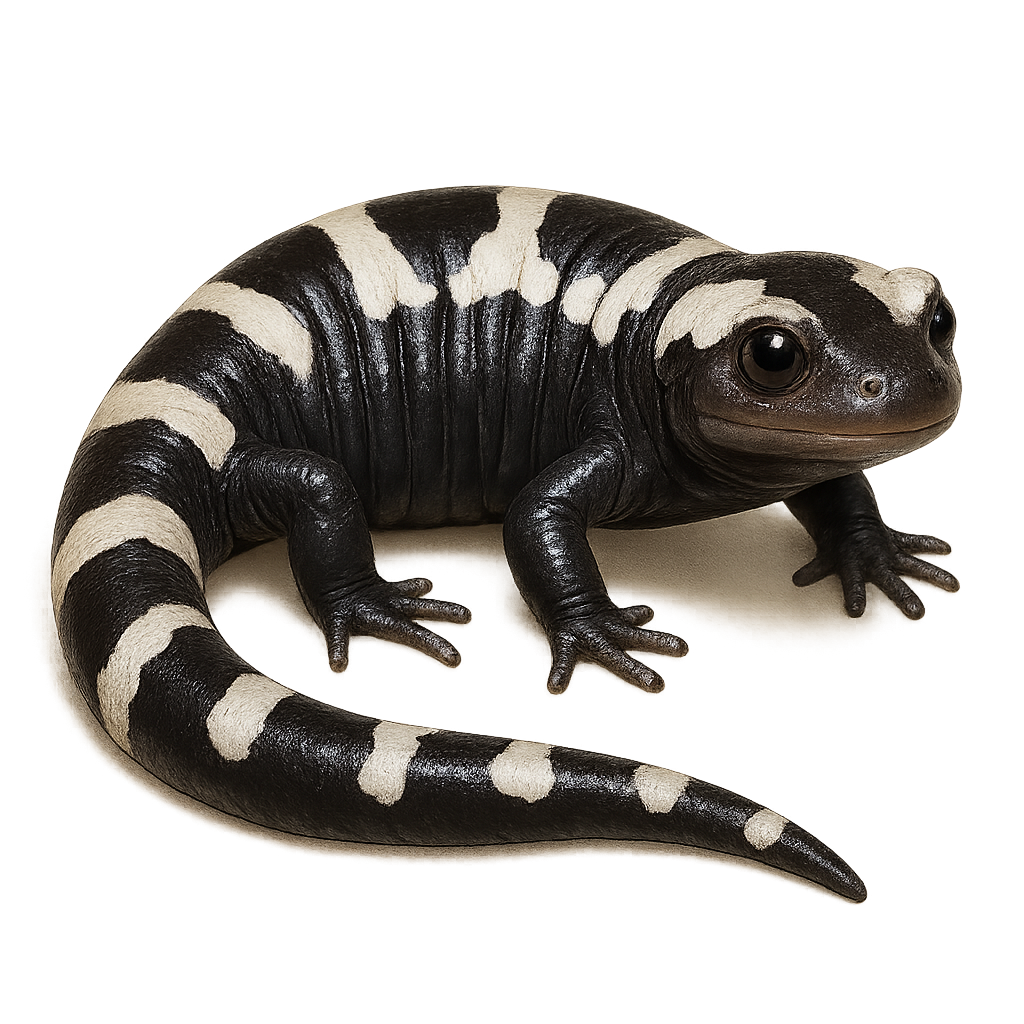The Dermophis mexicanus, or Mexican burrowing caecilian, is a burrowing amphibian characterized by its elongated, limbless body, resembling an earthworm. Its smooth, segmented skin allows it to move easily underground. Primarily nocturnal, this species feeds on small invertebrates found in the soil. It has keen senses to detect prey in the dark. Mexican caecilians inhabit moist environments, often near rivers or in tropical forests. They are ovoviviparous, meaning the young develop in eggs inside the mother's body until hatching. Though discreet, they play a crucial role in the ecosystem by regulating invertebrate populations.
The Melanophryniscus moreirae, or Maldonado Redbelly Toad, is a species of toad endemic to the mountainous regions of Brazil. This small amphibian, typically measuring between 2 and 3 cm, is notable for its rough skin and bright colors, often a mix of black, red, and yellow. These vivid colors serve as a warning signal to potential predators, as the Maldonado Redbelly Toad secretes potent skin toxins. It primarily inhabits high-altitude grasslands and cloud forests, where it feeds on insects and other small invertebrates. Although its habitat is limited, it plays a crucial role in the ecosystem by controlling insect populations.
Marbled poison frog is a small, brightly colored frog native to the humid tropical forests of South America, mainly in Ecuador and Colombia. It is easily recognizable by its smooth skin and vivid patterns of red, orange, and black. This species is known for its toxicity, producing potent alkaloids that deter predators. It typically inhabits moist undergrowth, feeding primarily on small insects. Males are territorial and use vocalizations to attract females and ward off rivals. Reproduction occurs in temporary aquatic environments, where tadpoles develop before becoming adult frogs.
The Machalilla Poison Frog is a small, brightly colored frog endemic to the humid forests of Ecuador. It is characterized by its smooth skin and vibrant color patterns, often red and black, which serve as a warning to potential predators of its toxicity. This species is typically found in the undergrowth, where it primarily feeds on small insects. It plays a crucial role in the ecosystem by controlling insect populations. Unfortunately, deforestation and habitat loss threaten its survival. Conservation efforts are essential to protect this unique species and its natural habitat.
The Morelet's Tree Frog, scientifically known as Agalychnis moreletii, is a striking species of arboreal frog characterized by its smooth skin and vibrant colors. It features a bright green back and a white belly, with prominent red or orange eyes. This nocturnal frog is found in the humid tropical forests of Central America, particularly in Mexico, Belize, and Guatemala. It is often seen perched on tree branches near water bodies, where it breeds. The Morelet's Tree Frog is an endangered species due to habitat loss and water pollution. It plays a crucial role in the ecosystem by controlling insect populations.
The Excidobates mysteriosus, commonly known as the Marañón poison frog, is a fascinating species from the Dendrobatidae family. It is endemic to the humid tropical forests of Peru, where it primarily inhabits dense undergrowth and areas near water streams. Its skin is a deep blue with distinctive black patterns, making it easily recognizable. Despite its beauty, it is difficult to observe due to its discreet nature and restricted habitat. This species is diurnal and primarily feeds on small insects. It plays a crucial role in the ecosystem by controlling insect populations. The mysterious frog is currently classified as vulnerable due to the loss of its natural habitat.
The Map Treefrog, Boana geographica, is a species of amphibian in the Hylidae family. It is primarily found in the humid tropical forests of South America, particularly in Brazil, Colombia, and Peru. This frog features a green coloration with distinctive geographical patterns on its back, allowing it to effectively camouflage in its natural environment. It is generally nocturnal, feeding on insects and other small invertebrates. The Map Treefrog plays a crucial role in the ecosystem by regulating insect populations. Although its conservation status is currently "Least Concern," deforestation and habitat loss pose potential threats to its long-term survival.
The Mexican Giant Tree Frog, or Agalychnis dacnicolor, is a tree-dwelling frog species native to the tropical forests of Mexico. It is easily recognizable by its bright green skin and distinctive red eyes, giving it a striking appearance. This frog is primarily nocturnal, resting on leaves during the day and becoming active at night to hunt insects. It uses its adhesive pads to climb trees and move agilely through its habitat. The Mexican Leaf Frog plays a crucial role in the ecosystem by regulating insect populations and serving as prey for various predators. Although its population is stable, it is threatened by deforestation and habitat loss.
The Misfit Leaf Frog, or Agalychnis saltator, is an arboreal frog native to the tropical forests of Central America. It is particularly known for its ability to leap long distances, allowing it to move efficiently between tree branches. Its skin is a bright green, providing excellent camouflage among the foliage. This frog's eyes are red with a vertical pupil, giving it a striking appearance. It is primarily nocturnal, hiding during the day to avoid predators. The leaf frog plays a crucial role in its ecosystem by regulating insect populations and serving as prey for other animals.
The Magnificent Tree Frog, or Litoria splendida, is a species of tree frog endemic to Australia, primarily found in the humid regions of the north. It is distinguished by its bright green color and golden eyes, making it a subject of fascination for herpetologists and nature enthusiasts. Measuring between 7 and 11 cm, this frog has smooth skin and adhesive fingers that allow it to easily climb trees. It is often active at night, feeding on insects and other small invertebrates. Although relatively tolerant of human activity, it is sensitive to environmental changes, particularly deforestation and water pollution.
The Ambystoma opacum, or marbled salamander, is a fascinating amphibian native to North America. It is distinguished by its modest size, typically between 9 and 11 cm, and its unique black and white coloration, giving it a marbled appearance. This salamander prefers humid habitats such as deciduous forests and marshy areas. It is nocturnal, meaning it is primarily active at night. The marbled salamander is oviparous, laying its eggs in moist depressions before the autumn rains. It is known for its ability to hide under leaves and debris to avoid predators. Although its conservation status is concerning, it is not currently endangered.
The marbled newt, Triturus marmoratus, is a medium-sized amphibian, typically measuring between 12 and 15 cm in length. Its skin features a distinctive marbled green and black pattern, providing excellent camouflage in its natural habitat. Males display a striking dorsal crest during the breeding season. This newt is primarily found in humid forests, meadows, and wooded areas of Western Europe, particularly in France and Spain. It is nocturnal, hiding under stones or leaves during the day. Reproduction occurs in ponds or temporary pools. Although its conservation status is concerning, it remains relatively common in some areas.


